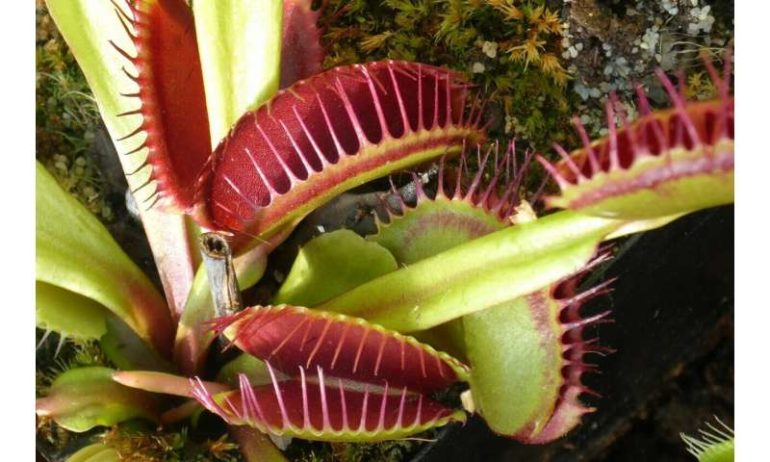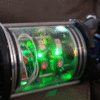Exploring new approaches to improve the capabilities and accuracy of robots, a team of researchers in Singapore has turned to an unexpected source: plants.
Robots have been dispatched to move cars, lift weighty inventory in warehouses and assist in construction projects.
But what if you need to delicately lift a tiny object 1/50th of an inch?
To accomplish that task, the Singapore team turned to a Venus flytrap, one of nature’s more fascinating plants. The flytrap, a native of North Carolina, contains tiny hairs on two leaf lobes that, when stimulated by an insect, shut tight and slowly devour the prey.
By integrating a portion of the flytrap into a robotic arm, researchers using a cellphone transmitted an electric pulse that triggered the flytrap to grasp a tiny piece of wire.
In another experiment, when the flytrap was disconnected from the robotic arm, it was prompted to capture a slowly moving 1-gram weight.
Though these early experiments are seemingly insignificant achievements, the researchers say this paves the way for construction of plant-based robots, sensors, memristors, ionic circuits and plant healthcare devices.
“In particular, the ability to interfere with a plant’s electrophysiology through external electrical stimulation opens new possibilities for building plant communication protocols,” said Wenlong Li and colleagues at Nanyang Technological University in their research report published this week in Nature Electronics.
The researchers said they turned to plants because of their “sophisticated capabilities,” “network-like communications,” “ability to learn and memorize” and “intricate functional microstructures.”
The team said their main challenges were to create a physical interface that allowed contact with the plant without affecting its movement or physiology, and attain effective communication.
“Because flytrap actuation is internally triggered by electro-physiological signals, artificial interference with the plant’s electro-physiology through external electricity could, in theory, modulate its actuation behavior,” they explained.
Plants have long captured the imaginations of researchers. Utah state University David Peak in 2004 said plants appear “to think.” He said plants use “distributed computation” when assigning regulatory tasks such as intake and expulsion of gases, tasks that require heavy information processing.
Paul Curmi, a professor at the University of New South Wales, discovered a class of algae in 2014 called cryptophytes that he said display evidence of “quantum coherence.”
When light strikes a plant, it needs to instantly determine which path will most efficiently and economically be required to convey the light into sugar. Quantum coherence ensures the best routes are taken.
In fact, it has been observed that the Venus flytrap utilizes a counting system to ensure objects landing within its cusps will likely be nutritional. After it senses an object, it waits for it to move two or three times, indicating it is a live object, before expending the precious energy and resources required to clamp down and secrete fluids that in turn will dissolve the inquisitive insect.
In the future, when we discuss computational power, we may speak not only of processor speed, RAM, hard drive capacity, and graphics card type, we might also ask about its flora factor: Venus flytrap, Sticky Willy, Sneezewort or Kangaroo Paws anyone?
Researchers probe memory of the Venus flytrap
More information:
Wenlong Li et al. An on-demand plant-based actuator created using conformable electrodes, Nature Electronics (2021). DOI: 10.1038/s41928-020-00530-4
2021 Science X Network
Citation:
Computer-assisted Venus flytrap captures objects on demand (2021, January 26)
retrieved 26 January 2021
from https://techxplore.com/news/2021-01-computer-assisted-venus-flytrap-captures-demand.html
This document is subject to copyright. Apart from any fair dealing for the purpose of private study or research, no
part may be reproduced without the written permission. The content is provided for information purposes only.



